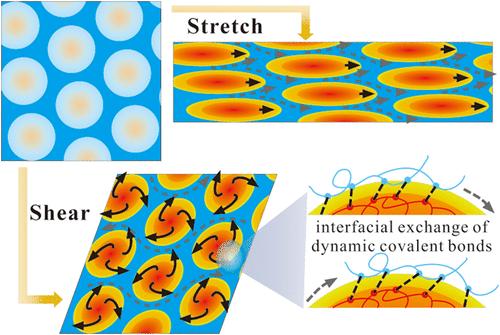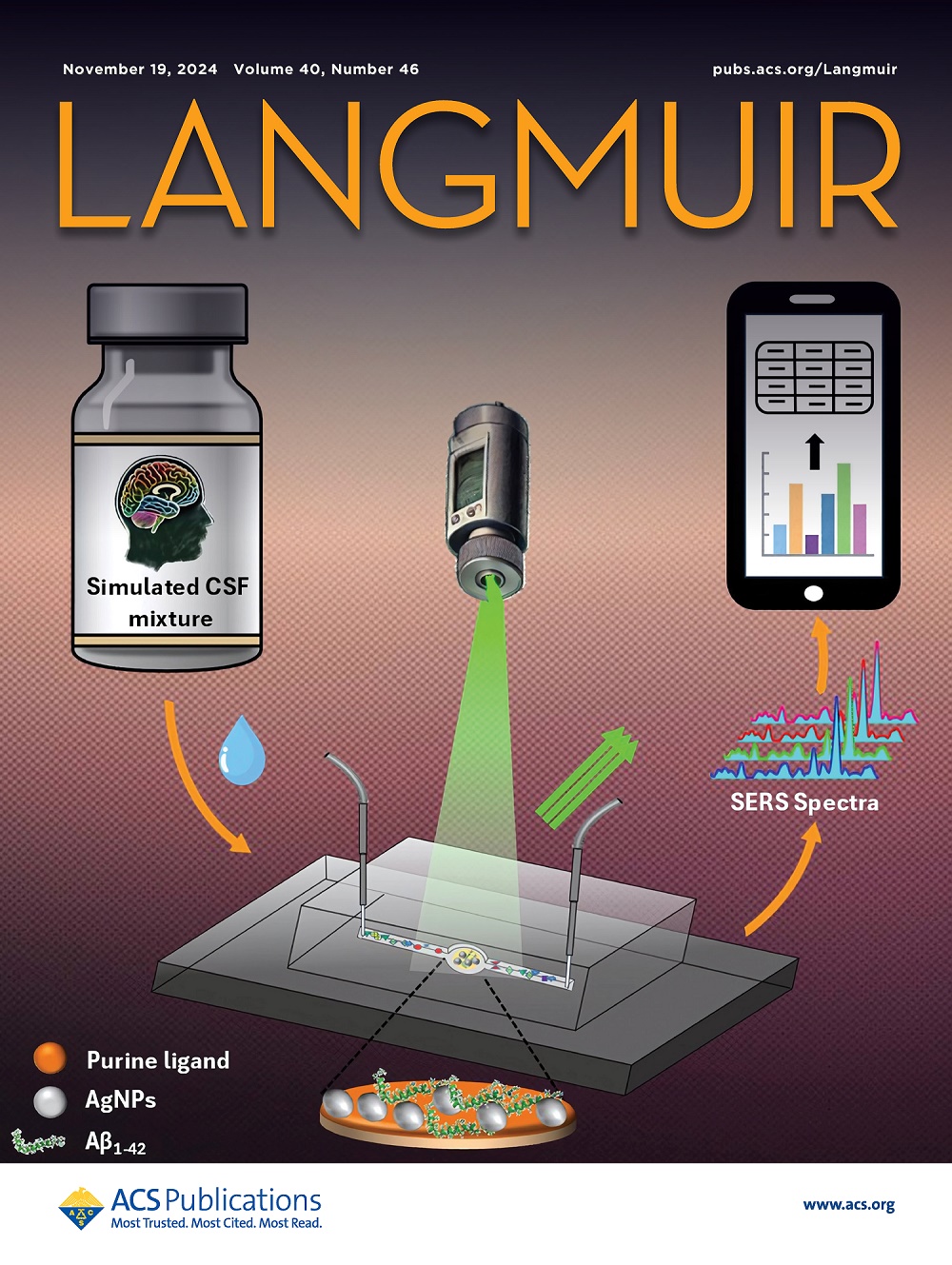Molecular Insights into Interfacial Stress Amplification and Network Reinforcement in Extrudable Multiphase Vitrimers
IF 3.9
2区 化学
Q2 CHEMISTRY, MULTIDISCIPLINARY
引用次数: 0
Abstract
Incorporating dynamic covalent bonds (DCBs) into elastomers provides a seminal solution for the upcycling of traditional thermoset elastomers. Recently, engineering a multiphase network with various cross-linking uniformity and phase structures has been proven to be an effective strategy to overcome the bottleneck of continuous and high-throughput recycling (e.g., extrusion reprocessing) of vitrimeric elastomers. However, all of the relevant studies only focused on revealing the influences of network structures on the macroscopic properties of the systems. As for the microscopic mechanism of the multiphase network at the molecular level, it is still lacking. Herein, based on coarse-grained molecular dynamics (CGMD) simulation, a modeled DCBs-cross-linked elastomer with a multiphase network was established, which was subsequently subjected to in situ tensile or shear forces to simulate the evolution of local chain segment motion and stress/strain distributions in various microregions of the network under the complex extrusion/injection force field. The results indicate that phase domains with different cross-link densities feature distinct chain segment motion behavior and local stress/strain distribution evolution during tensile/shear deformation, and the interfacial phase exhibits significant high stresses. Therefore, incorporating heterogeneously cross-linked multiphase networks into elastomeric vitrimers can enable the system to have significant network reinforcement and unique interfacial stress amplification effects, which are critical for determining extrusion/injection reprocessability. Therefore, we envisage that the present study can provide a molecular-level theoretical explanation for the extrusion/injection reprocessability of multiphase elastomeric vitrimers, thereby guiding the rational network/performance design of these seminal materials.

挤出多相玻璃体中界面应力放大和网络强化的分子研究
将动态共价键(DCBs)结合到弹性体中,为传统热固性弹性体的升级回收提供了一个开创性的解决方案。近年来,设计具有各种交联均匀性和相结构的多相网络已被证明是克服玻璃聚合弹性体连续和高通量回收(如挤出再加工)瓶颈的有效策略。然而,所有的相关研究都只关注于揭示网络结构对系统宏观性质的影响。对于多相网络在分子水平上的微观机制,目前还缺乏研究。基于粗粒分子动力学(CGMD)模拟,建立了具有多相网络的dcb交联弹性体模型,并对其进行了原位拉伸或剪切作用,模拟了复杂挤压/注射力场下网络各微区域的局部链段运动演化和应力/应变分布。结果表明:不同交联密度的相域在拉伸/剪切变形过程中具有不同的链段运动行为和局部应力/应变分布演化,界面相表现出明显的高应力;因此,将非均相交联多相网络加入弹性体玻璃体中,可以使体系具有显著的网络增强和独特的界面应力放大效应,这对于确定挤出/注入再加工性至关重要。因此,我们设想本研究可以为多相弹性玻璃体的挤出/注射再加工性提供分子水平的理论解释,从而指导这些精粹材料的合理网络/性能设计。
本文章由计算机程序翻译,如有差异,请以英文原文为准。
求助全文
约1分钟内获得全文
求助全文
来源期刊

Langmuir
化学-材料科学:综合
CiteScore
6.50
自引率
10.30%
发文量
1464
审稿时长
2.1 months
期刊介绍:
Langmuir is an interdisciplinary journal publishing articles in the following subject categories:
Colloids: surfactants and self-assembly, dispersions, emulsions, foams
Interfaces: adsorption, reactions, films, forces
Biological Interfaces: biocolloids, biomolecular and biomimetic materials
Materials: nano- and mesostructured materials, polymers, gels, liquid crystals
Electrochemistry: interfacial charge transfer, charge transport, electrocatalysis, electrokinetic phenomena, bioelectrochemistry
Devices and Applications: sensors, fluidics, patterning, catalysis, photonic crystals
However, when high-impact, original work is submitted that does not fit within the above categories, decisions to accept or decline such papers will be based on one criteria: What Would Irving Do?
Langmuir ranks #2 in citations out of 136 journals in the category of Physical Chemistry with 113,157 total citations. The journal received an Impact Factor of 4.384*.
This journal is also indexed in the categories of Materials Science (ranked #1) and Multidisciplinary Chemistry (ranked #5).
 求助内容:
求助内容: 应助结果提醒方式:
应助结果提醒方式:


